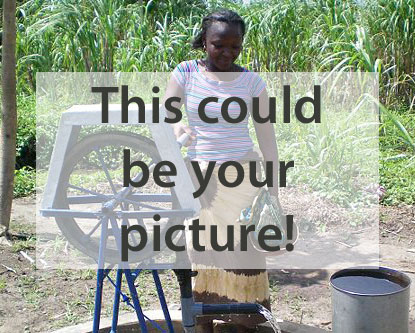Boiling
Boiling is considered the world’s oldest, most common, and one of the most effective methods for treating water. If done properly, boiling kills or deactivates all bacteria, viruses, protozoa (including cysts) and helminths that cause diarrheal disease.
Pathogens are killed when the temperature reaches 100 degrees Celsius. In high-lying areas, where the boiling temperature of water can be as low as 80 degrees Celcius, a longer boiling time is necessary to kill all pathogens.
| Advantages | Disadvantages/limitations |
|---|---|
| - Simple - Uses common knowledge |
- Inefficient - Requires a considerable amount of energy (wood, charcoal, fuel) |
History and social context
Suitable conditions
|
|
Technical specification
Operation
Water is heated over a fire or stove until it boils. Different fuel sources can be used depending on local availability and cost (e.g. wood, charcoal, biomass, biogas, kerosene, propane, solar panels, electricity).
Water bubbling as it boils provides an easy to recognize visual indicator and does not need a temperature gauge.
Pathogens are killed when the temperature reaches 100 degrees Celsius. Boil water for 1 minute and add 1 minute per 1000 metres of elevation. Boiled water should be kept in the pot covered with a lid until it is consumed.
Recommended boiling times vary between organizations. The World Health Organization recommends that water be heated until it reaches the boiling point (WHO1). The Centers for Disease Control and Prevention, recommends a rolling boil of 1 minute, to ensure that users do not stop heating the water before the true boiling point is reached (CDC, 2009).
CAWST2 recommends boiling water for 1 minute and adding 1 minute per 1000 metres of elevation.
Recontamination of boiled water is a major problem. Water is often transferred from the pot into dirty storage containers which then make it unsafe to drink. It is recommended to store boiled water in its pot with a lid to reduce the risk of recontamination.
Some people believe that boiled water tastes flat. This is caused by dissolved oxygen escaping from the water as it boils. This can be reduced by vigorously stirring or shaking cooled water to increase its dissolved oxygen content.
Almost all households have the equipment required to boil water.
Boiling requires fuel supply and takes time. Users may not consistently boil water to conserve fuel and save time.
Treatment Efficiency
| Bacteria | Viruses | Protozoa | Helminths | Turbidity | Iron | {{{extra_Field}}} | |
|---|---|---|---|---|---|---|---|
| Laboratory | Up to 100% | Up to 100% | Up to 100% | Up to 100% | 0 | 0 | {{{lab:extra}}} |
| Field | 97-99%34 | not available | not available | not available | not available | 0 | {{{field:extra}}} |
Maintenance
Pots used for boiling may need to be replaced.
Manufacturing
Needed materials are fuel (e.g. wood, charcoal, biomass, biogas, kerosene, propane, solar panels, electricity, a pot and a lid. Labour is needed for the regular collection of some fuels (e.g. wood, charcoal, biomass).
There is potential for burn injuries; caution should be maintained around stoves and fires and when handling hot water. Cause of respiratory infections associated with poor indoor air quality; improved stoves can be used to reduce illness and death from indoor fires and stoves.
Estimated Lifespan
On-going requirement for fuel. Pots used for boiling need may need replacement.
Cost
| Captial Cost | Operation Cost | Replacement Cost | Estimated 5 years Cost | Cost/liter treated |
|---|---|---|---|---|
| US$ 0* | US$ 0 - 2/month and up | US$ 0 | US$ 0 - 120 | US$ ~0.01 |
(*) Households are assumed to already have a pot and fire/stove for cooking Note: Program, transportation and education costs are not included.
Country experiences
Manuals
Movies
External Links
CAWST (Centre for Affordable Water and Sanitation Technology)
Footnotes
- ↑ WHO
- ↑ Centre for Affordable Water and Sanitation Technology
- ↑ Clasen (2007)
- ↑ Clasen et al. (2007)
Acknowledgements
This article is based on a factsheet from Centre for Affordable Water and Sanitation Technology (CAWST), which is gratefully acknowledged.
References
- Centers for Disease Control and Prevention (2009). Household Water Treatment Options in Developing Countries: Boiling. Atlanta, USA.
- Clasen, T. (2007). Microbiological effectiveness and cost of boiling to disinfect drinking water: Case studies from Vietnam and India. (Presentation) London School of Hygiene and Tropical Medicine.
- Clasen, T., Thao, D., Boisson, S., and Shipin, O. (2008) Microbiological effectiveness and cost of boiling to disinfect drinking water in rural Vietnam. Environmental Science and Technology; 42(12): 42:55.
- World Health Organization. Household Water Treatment and Safe Storage Following Emergencies and Disasters: South Asia Earthquake and Tsunami. Available at: [www.who.int/household_water/en/]

|
